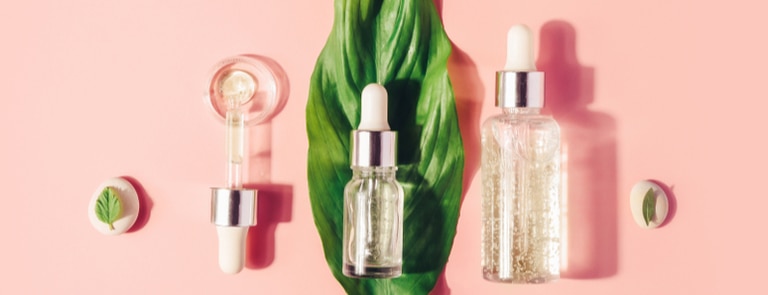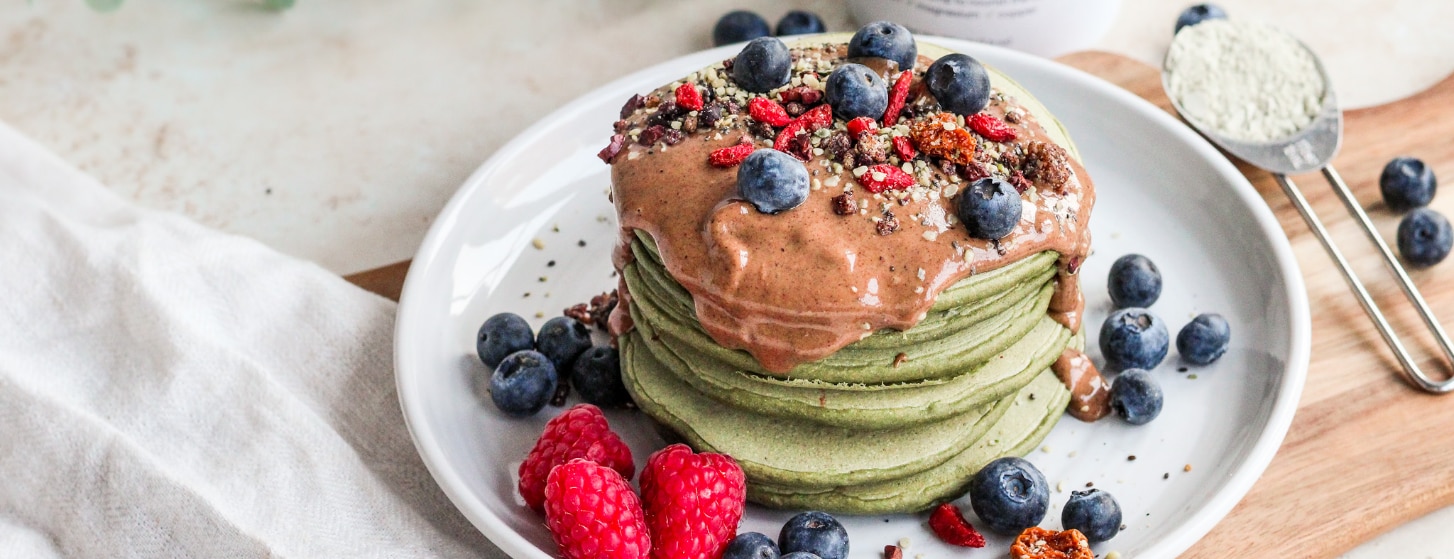10% off £35
Code:SAVE
Nutrition for cyclists: a detailed guide

It's important to fuel your body with the right nutrition when cycling. Find out what to eat
before, during and after your bike rides, here in our detailed guide
Summary
1What to eat before a bike ride
Whatever type of endurance exercise you do, carbohydrates are your best friend. This is because carbs are your body's main source of energy...
2What to eat during a bike ride
If you’re on a long ride, or taking part in an event, you’ll need to top up your energy with a hit of carbohydrates to keep your legs pumping...
3What to eat after a bike ride
Post-ride, your nutrition should focus on supporting your recovery. Restoring energy levels with carbohydrates and helping your muscles to repair...
Whether you pedal to work, take your tyres up mountains or race competitively, getting the right
nutrients at the right time can make a world of difference to how you feel and perform when you
cycle.
We’re sharing our top tips and advice on what you can eat before, during and after you go
cycling – helping you get set up to ride, improve your overall performance and support your
recovery.
What is a good diet for cyclists?
As with all forms of endurance exercise, your body needs the right foods to give it the power
and energy to get you from point A to point B when you get on your bike.
To help you enjoy (and not just endure!) cycling, you need to nourish your body with a healthy
and balanced diet. This should consist of a mix of the six essential nutrients for health:
carbohydrates, proteins, fats, vitamins, minerals and water.1,2
These can be broadly split into macronutrients and micronutrients. We need macronutrients,
such as fat, protein and carbohydrates, in larger quantities to provide us with energy.
Micronutrients, like vitamins and minerals, are equally important – they don’t contain calories but
are consumed in very small amounts and help support optimal health.1,2
But to know what to eat as a cyclist, it first helps to understand the roles that each of these
nutrients play:2-5
- carbohydrates are crucial for providing the body with energy and play a key role in gut health and immune function
- proteins provide energy and are essential for growth and repair, especially for muscles
- fats are the main source of stored energy in the body and can aid the absorption of vitamins A, D, E and K
- vitamins regulate body processes and support the normal function of your body’s systems
- minerals also regulate body processes and help your body to function in a normal way
- water transports essential nutrients to all parts of your body, maintains body temperature and carries waste products to be disposed of

What to eat before a bike ride
Whatever type of endurance exercise you do, carbohydrates are your best friend.6
This is because carbs are your body's main source of energy. The amount you need, however, depends on the intensity and duration of your exercise, and what you’re looking to achieve with it.2,6
If you’re going on a long-distance ride or are in training for an event, a larger meal with a decent
portion of carbs is what your body needs in order to have enough energy to perform.6
For gradual energy release, try to eat regular meals throughout the day and have a low-fat,
carb-heavy snack or meal around two to three hours before you start.6
Build your pre-cycle meals around carb-heavy foods like:6–8
- wholemeal bread
- wholegrain cereal
- oatmeal
- Greek yoghurt
- fresh fruit and vegetables
- pulses, like beans, peas and lentils
- brown pasta, rice, noodles
- potatoes

What to eat during a bike ride
If you’re on a long ride, or taking part in an event, you’ll need to top up your energy with a hit of
carbohydrates to keep your legs pumping.
When doing this, it’s a good idea to eat little and often, aiming to get between 30 to 60g of carbohydrates per hour while cycling.9
However, if you want to keep going while you refuel, energy boosters that you can carry with
you like sports drinks, sports gels or low-sugar protein bars are quick and easy to get down
without needing to stop.11,12

What to eat after a bike ride
Post-ride, your nutrition should focus on supporting your recovery.
This means restoring energy levels with carbohydrates and helping your muscles to repair with protein.11
It’s important to get enough protein both after you cycle and throughout the day in order to help your muscles recover and repair. This will ensure its full absorption and fuel the muscles over
several hours. As a general rule, you should try to consume 1.5 to 2g of protein per kg of body
weight every day. 7,11
Some of the best high-protein foods to prioritise include:11
- a three-egg omelette = 18g
- 100g of sirloin steak = 25g
- a tuna sandwich (1 drained can) = 27g
- two turkey breast steaks = 43g
- 500ml of whole milk = 16g
- half a cup of cottage cheese = 18g
- half a tin of baked beans = 10g
What to drink while cycling
As well as nailing your nutrition, it’s important to stay hydrated, before, during and after your
rides.
In the two to four hours leading up to a big cycle, try to drink around 500ml of fluid to help your
body get the nutrients it needs from your carby meal.12
Keep drinking little and often throughout your cycle too, especially on longer rides. This not only
helps you stay hydrated but also allows the nutrients from your energy top-ups to be absorbed
properly.7,10
Depending on how hot it is, you should aim to drink somewhere between 400 and 700ml of fluid
per hour. But, to avoid bloating, this should be taken in small sips every 15 to 20 minutes.11,13
Popping a dissolvable electrolyte tablet in your water bottle can also help you keep hydrated.13,14
Once you’ve finished your ride, it’s important to rehydrate with plenty of fluids after your workout
as well, to make your carb and protein refuel as effective as possible. So consuming plenty of
water and sports drinks should help do the trick.7 Speaking of which…
The benefits of cycling gels
While real food is always best when it comes to nutrition, energy gels can offer a quick,
convenient and efficient way of getting the energy boost you need while keeping your wheels
turning. 15
So if you’re going for a long ride, simply pop a few gels in a zipped pocket beforehand to get a
fast energy hit whenever you need it most. 11
What should cyclists avoid eating?
Certain foods can affect your performance, so are best avoided if possible.
For example, you should try to steer clear of high-fat foods, as these can slow digestion, and
aim to eat low-moderate amounts of fibre before you set out.10
If you’re not used to certain foods or spicy foods, try to avoid these too as they may cause some
tummy troubles that could affect your ride.11,16
The final say
When it comes to optimising your cycling nutrition, carbs, protein and water are your best
friends.6,10,11
By staying hydrated, replenishing your energy levels and helping your body to recover, you
should be able to better prepare and perform at your best whenever you’re next out exploring
the world on your bike.6,10,11
- British Heart Foundation. What are macronutrients? [Internet]. 2022. [cited 2024 April 18]. Available from: https://www.bhf.org.uk/informationsupport/heart-matters- magazine/nutrition/ask-the-expert/macronutrients.
- Morris AL, et al. Biochemistry, nutrients. In: StatPearls [Internet]. Treasure Island (FL): StatPearls Publishing; 2024 [cited 2024 Apr 18]. Available from: http://www.ncbi.nlm.nih.gov/books/NBK554545/.
- British Nutrition Foundation. Protein [Internet]. 2023. [cited 2024 April 18]. Available from: https://www.nutrition.org.uk/nutritional-information/protein/
- British Nutrition Foundation. Fat [Internet]. 2023. [cited 2024 April 18]. Available from: https://www.nutrition.org.uk/nutritional-information/fat/.
- British Nutrition Foundation. Vitamins and Minerals [Internet]. 2023. [cited 2024 April 18]. Available from: https://www.nutrition.org.uk/nutritional-information/vitamins-and- minerals/.
- The Association of UK Dieticians. Sport and Exercise [Internet]. [cited 2024 April 18]. Available from: https://www.bda.uk.com/resource/sport-exercise-nutrition.html.
- José Joaquín Muros, Cristóbal Sánchez-Muñoz, Campos D, Hinojosa-Nogueira D, José Ángel Rufián-Henares, Mateo-March M, et al. Nutritional Habits of Professional Cyclists during Pre-Season. Nutrients [Internet]. 2022 Sep 7 [cited 2024 Jun 18];14(18):3695–5. Available from: https://www.mdpi.com/2072-6643/14/18/3695
- British Heart Foundation. Food for fitness: what should I eat before a workout? [Internet]. 2021. [cited 2024 April 18]. Available from: https://www.bhf.org.uk/informationsupport/heart-matters-magazine/nutrition/food-for- fitness.
- Counting Carbs. Counting Carbs? [Internet]. NIH News in Health. 2017 [cited 2024 Jun 18]. Available from: https://newsinhealth.nih.gov/2012/12/counting-carbs
- Chlíbková D, Beat Knechtle, Rosemann T, Tomášková I, Vlastimil Chadim, Shortall M. Nutrition habits in 24-hour mountain bike racers. SpringerPlus [Internet]. 2014 Dec 1 [cited 2024 Jun 18];3(1). Available from: https://link.springer.com/article/10.1186/2193- 1801-3-715
- British Cycling. Nutrition Guide [Internet]. [cited 2024 April 18]. Available from: https://www.britishcycling.org.uk/zuvvi/media/bc_files/membership/Book_Final.pdf.
- Better Health Channel. Sporting performance and food [Internet]. 2024. [cited 2024 April 18]. Available from: https://www.betterhealth.vic.gov.au/health/healthyliving/sporting- performance-and-food.
- Marie Curie. Cycling nutrition guide: fuel your engine [Internet]. [cited 2024 April 18]. Available from: https://www.mariecurie.org.uk/get-involved/charity- events/cycling/cycling/cycling-nutrition-guide.
- Sparks IM, Rensburg van, Fletcher L, Rensburg van. A cross-sectional study of 2550 amateur cyclists shows lack of knowledge regarding relevant sports nutrition guidelines. South African Journal of Sports Medicine [Internet]. 2018 [cited 2024 Jun 18];30(1). Available from: https://www.ajol.info/index.php/sasma/article/view/170610
- Effects of pre-exercise ingestion of a carbohydrate-electrolyte gel on cycling performance [Internet]. Journal of the International Society of Sports Nutrition. 2022 [cited 2024 Jun 18]. Available from: https://www.tandfonline.com/doi/full/10.1186/1550- 2783-8-S1-P28
- Gaia Giuriato, Venturelli M, Matias A, Soares K, Gaetgens J, Frederick KA, et al. Capsaicin and Its Effect on Exercise Performance, Fatigue and Inflammation after Exercise. Nutrients [Internet]. 2022 Jan 6 [cited 2024 Jun 18];14(2):232–2. Available from: https://www.mdpi.com/2072-6643/14/2/232
While we strive for accuracy and balance, please be aware that this article may discuss
products available for purchase through Holland & Barrett. Consult a healthcare professional
before making any health-related decisions.
Related Articles
Shop by wellness goal
Sign up for exclusive offers
Plus, get expert advice to support your health & wellness straight to your inbox when you sign up to Holland & Barrett emails.
Read our
privacy policy














